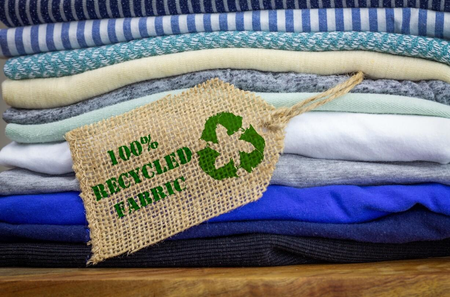Consumers have been shifting gradually to sustainable and eco-friendly fashion. Although the trend has picked up pace in the post-pandemic era, much needs to be done to further sustainable and eco-friendly fashion. The onus lies not just upon the fashion industry but also upon other parties for effective implementation.
Understanding Sustainable vs Eco-friendly Fashion
Both terms sustainable and eco-friendly are used interchangeably. However, in terms of fashion, there is a slight chance that differs between the two. Sustainable fashion is inclusive of the environmental effects that a cloth can have. It takes into account the long term impacts of the production of the garment and their disposal.
On the contrary, eco-friendly fashion is aimed at using efficient yet reduced natural energy resources for production. Additionally, reusing, repairing, and recycling garments is also considered. However, eco-friendly items can become unsustainable if used excessively.
4 Reasons Why Sustainability is Important
Over the last few years, sustainable choices are being adopted worldwide. This is true for all socio-economic aspects. One of the possible reasons is that humans have been affected directly by the lack of responsibility towards nature.
-
Occurrence of Rapid Climate Change
The climate, all around the globe, has been changing drastically. Many weather patterns are unusual and result in unexpected dry or wet spells. Some areas have extended summers with record-breaking temperatures while other areas experience short winters but with dangerously low temperatures. Not only are these limiting to human activities but also result in unwanted natural phenomena.

-
Frequently Occurring Rare Events
These include wildfires that occur as a result of high temperatures and extremely dry conditions. For example, the 2021 wildfires in California, Istanbul, and Australia not only polluted the air but also proved harmful for humans and fatal to the inhabiting animals. Areas to the South and Central Asia began experiencing smog during the fall season. It results in breathing difficulties and red-shot eyes leading to days of inconvenience. Extreme dry conditions in Central America and East Africa result in prolonged droughts. All such events scream of a dire need to take action.
-
Loss of Biodiversity
Drastic temperature changes result in inhabitable conditions for many animals. Either the animals migrate to areas with suitable temperatures or become endangered, resulting in a lack of biodiversity. Wildfires prove fatal for forest-related species. The increased ocean temperatures also pose threat to corals and marine organisms.

-
Ethical Issues in Fashion Industry
This refers to maneuvering activities such that they are carried out in a morally responsible manner. This includes the use of renewable resources instead of non-renewable ones. Slaughter of animals for fur and stripping birds for their down is a painful process. Due to technological advancements, better fabric alternatives are available which should be used. Various combinations should be explored for the different weather types.

Trends in Consumer Behavior
In a recent change of events, especially post-global pandemic era, consumers have consciously decided upon eco-friendly options and strategies. However, consumers do expect brands and the industry to play their role by initiating steps that facilitate consumers to follow sustainable fashion.
Awareness for Sustainable Strategies at Consumer level
According to Mckinsey’s research, about 57-60% of consumers have made significant changes that are harmonious to sustainable fashion, at times even going out of the way for recycling and environment-friendly packaging. Many cut down spending on fashion items during the pandemic and even hope the habit continues post Covid’19.
Many Gen-Zers and millennials are more accepting of cheaper fashion alternatives. This is essential in shaping purchasing behavior that encourages less spending. Such behavior would ultimately result in less production of fast fashion, putting less pressure on the environment.
Eco-wakening Amongst Consumers
According to the latest global report by The Economist Intelligence Unit, the past five years have observed a 71% rise in online search focused on sustainable goods. This “eco-wakening” is observed all across the globe, including the developed and the developing economies. Some of the steps that can be taken to further awaken the masses for sustainable fashion include:
-
Implementation of Eco-Friendly Strategies at Government Level
Stringent policies from the Government would ensure that they are being followed and implemented in true word and spirit. The involvement of the Government would give the brands and the masses a direction to follow. It would help if the governments would work in close collaboration with the fashion industry to bridge any communication gaps. Any limitations by the fashion industry would be easily understood and dealt by the Government.
-
Scrutiny of Brands for Their Contribution to The Task
Close monitoring of the various processes involved from the production of an item to its delivery to the consumer is necessary. Not only does this take into account the making and use of fabric but also the chemicals involved in final processing. Additionally, whether the packaging and delivery are in line with sustainable goals is also monitored. On an individual level, brands can be involved with eco-wakening campaigns.
-
Consumer Sustainability Awareness
Various stakeholders need to take the responsibility of educating the masses. This should consist of research statistics and campaigns associated with the fashion industry. All forms of media including social media should actively participate in shaping mindset and making the masses aware of eco-friendly fashion.

Embracing Sustainable and Eco-friendly Fashion
While embracing sustainable and eco-friendly fashion in the presence of fast fashion would take time, however, it is not impossible. It falls upon one’s self to make a few commitments such as buying from conscious brands, avoiding fast fashion, purchasing products with natural and man-made fibers, buying preloved items, and spending only when in need.
Benefits for Mankind, Animals and World
Following sustainable and eco-friendly fashion results in many benefits for the human and animal inhabitants and the environment. The effects may not always be visible and can be indirect in many cases. The 4 below mentioned reasons should be enough to motivate one to adopt sustainable fashion options:
-
Reducing Pollution From Industry
Companies manufacturing sustainable clothing are structured to be less damaging to the environment. Some of the practical steps include: Less use and waste of water along with reduced carbon emissions; putting an end to unethical waste disposal; use of recycled materials in packaging; and fair labor times and wages for the factory employees.

-
High Quality Clothing Fabric
Sustainable clothing is usually of high quality because the brands ensure the investment is not put to waste. Thus, the products are sturdy, skin-friendly, and capable of being used for longer durations. This would also mean less frequent spending. Unlike with fast fashion, the garments tend to be of low quality and are meant to be used for a short period resulting in frequent shopping.

-
Animal Safety and Preservation
Alternatives to using animal skin would ensure a reduction in mass-scale slaughtering. Indirectly, shaping the fashion industry along sustainable lines would mean reduced carbon emissions in the environment. Any climate changes that are damaging to animal colonies can, thus, be reduced.
-
Conserving Natural Resources
Reduced use of non-renewable energy forms would help conserve them. In addition, natural water bodies can be protected from harmful chemical agents used in the dyeing and treating of manufactured products. Unusual water amounts can be prevented from wastage. The use of plant-based fibers means that the source is renewable and biodegradable.







